How 29-Year-Old Ellen Bennett Became The Culinary World’s Apron Queen
Ellen Bennett just wants to have fun—all the while making “Proper Bad Ass Aprons.”
In just five short years, she’s turned determination to do something about drab, flimsy kitchen wear into a multimillion-dollar empire. Along the way, her handcrafted aprons have won fans like lifestyle doyenne Martha Stewart and top chefs Mario Batali, David Chang, April Bloomfield, Nobu Matsuhisa, and Alton Brown.
The 29-year-old entrepreneur is clearly having a good time storming the culinary world. So are the workers at her 17,000-square-foot Hedley & Bennett facility in downtown Los Angeles. For one thing, the cavernous space has a full-sized indoor tree house. And then there’s a slide, swing, and a zip line, just in case any of her employees need a change of pace as they go about their workday. And, oh yeah, the place is festooned with bright red, orange, blue, and green aprons.
“Everybody who stops by our headquarters gets a hug and an ice cream,” Bennett says.
But make no mistake, behind all her playful exuberance is a woman deadly serious about the movement behind her business: She’s obsessed with creating more dignified workwear. She wants line cooks, chefs, and waiters to have uniforms they are proud to wear, made from materials that don’t tear or come apart in a hot kitchen.
Bennett never set out to become a CEO: After attending culinary school, she started working as a line chef at Providence, a two Michelin-starred L.A. restaurant. As she sharpened knives and cut up carrots, she found herself distracted by her poorly made aprons and shirts. They were, to use Bennett’s words, “Total shit.”
Old-school kitchen uniforms tend to be made of a cheap poly-cotton blend that doesn’t breathe. Chef coats tend to be thick, rigid, and oversized, making it hard to move. Apron pockets rip off easily, straps are rarely adjustable, and when they are, they’re kept in place with plastic hardware that would melt in a hot kitchen.
“I kid you not: Two out of the three aprons I would wear every day at the restaurant had dangling pockets because they had ripped,” she says. “Everything at the restaurant—from the china to the way people stood—every single detail was on point. But the staff in the kitchen looked and felt terrible all day long, every day. There was a delta between how the staff looked and the actual food they were putting out.”
Bennett, who has always had an eye for design, began to do her own research into the kitchen-wear industry out of sheer curiosity. She found that mainstream restaurant suppliers generally import cheap products from overseas, and are focused on delivering volume and low cost, rather than quality. This is clear from a quick Google search: You can get a “professional-grade” apron for as low as $ 1.99 from any number of online uniform suppliers.
Bennett believes that many of these manufacturers are far removed from restaurant kitchens and do not know what cooks really need. That’s the only way to explain how they could use plastic buttons that melt.
There were a couple of other luxury apron companies on the market, like Blunt Roll, which makes denim and leather aprons that double as knife rolls for between $ 170 and $ 350 per piece. And some restaurants, like Qui and Craftsman and Wolves, made their own aprons, which they also sold in-store. But no company was creating high-quality uniforms at scale.
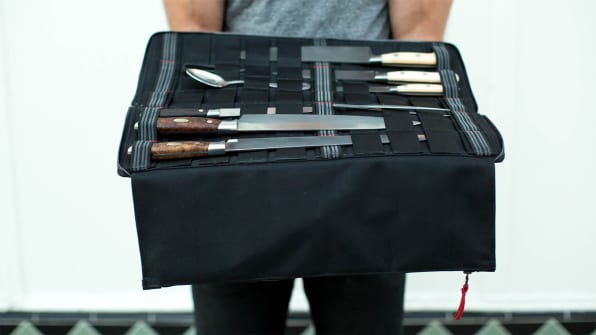
“There was such a hole in the market,” Bennett says. “The uniform—which is one touchpoint that the customer actually sees—was the last thing that restaurateurs thought about. But that’s insane when you consider the millions that it costs to set up a restaurant.”
In the end, Bennett’s business came about by accident. One day, the chef at Providence mentioned that he was going to bring in a company to fit workers for new aprons. Bennett begged him to let her design and make the aprons herself.
“I had enough conviction in that moment that he gave me the opportunity,” Bennett recalls. “Suddenly, I had an order of 40 aprons.” She took $ 300 from her savings account and developed her very first collection. “I didn’t have sewers, but I had a very clear vision of what I wanted to create. And that’s how Hedley & Bennett was born,” she says.
The name of the company is derived from both sides of her family. Hedley refers to her English grandfather, a scientist who would read the botanical encyclopedia on the weekends. Bennett comes from her fiery paternal side of the family, who are Mexican.
“When you merge the two different cultures, you get a mix of timelessness and a colorful, “take life by the lapels,” positive outlook on life,” Bennett explains.
From her very first batch for the Providence team, Bennett has used the best-quality materials she could get her hands on in L.A.’s garment district, including Japanese denim, American canvas, and linens from around the world, plus brass hardware. Besides being beautiful to look at and touch, they were also breathable.
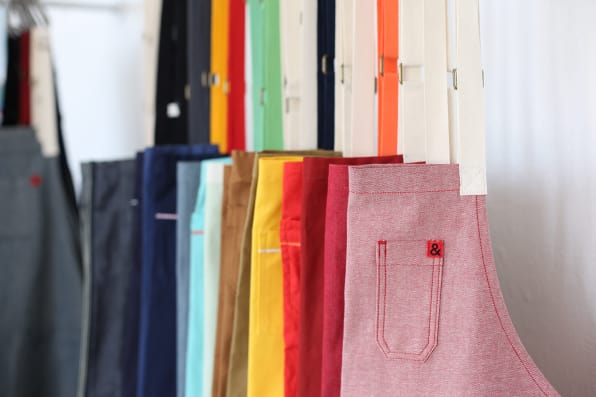
In the sewing process, she ensured that every pocket corner was reinforced. And when it came to straps, she created a cross-back system that would lie flat against the back, instead of getting twisted. She also thought carefully about what colors and patterns would be suitable in a formal restaurant setting, but added a touch of style.
“I took inspiration from my favorite clothing designers,” says Bennett. “I’d take a pocket from a Theory shirt or a collar from a Brooks Brothers blazer and incorporate them into these uniforms.”
After making that first set of aprons, Bennett approached chefs like Mario Batali and David Chang at events, said that she was an apron designer, and asked them what they wanted in kitchen workwear.
This “fake it till you make it” approach worked like a charm. In addition to getting their feedback, she was quickly able to make these celebrity chefs her customers. This process of collaboration on the design process also helped her buyers understand why her aprons would cost so much more than the standard-issue apron. Hedley & Bennett aprons run between $ 50 and $ 120, but prices go down for large-scale industry orders.
Soon after outfitting Providence, L.A.-based chefs Jon Shook and Vinny Dotolo called, wanting her aprons for their flagship restaurant ANIMAL. Their main gripe was that standard apron straps were too short, so Bennett helped them craft aprons with extra-long straps. When Timothy Hollingsworth wanted a new work shirt for his restaurant Otium in downtown L.A., Bennett collaborated with him, testing samples in the kitchen and providing feedback for redesigns. He then outfitted his entire staff with them. Rick Bayless, one of Chicago’s most notable chefs who just won the James Beard Award for Outstanding Restaurant, was one of Bennett’s earliest customers, stocking all his restaurants with her gear.
This period was still what she describes as a “hustle.” Bennett kept her day job, but went up to one chef at a time, trying to convince him or her to buy her handmade aprons.
Within a year, Bennett had cut down her hours at Providence to two days a week so she could work on Hedley & Bennett, and was getting mentions in the New York Times Magazine. Three years later, Bennett is the CEO of her own company. She has 31 people on her payroll, including 12 who work entirely on manufacturing the aprons. She works with four other factories on the new products Hedley & Bennett now sells.
Bennett has helped restaurants around the world to seriously up their apron game. Hedley & Bennett creates uniforms for 4,000 restaurants and coffee shops all over the U.S., including Blue Bottle Coffee, Intelligentsia, and Lazy Bear.
If you’ve visited a fine dining establishment lately–maybe Ink, Momofuko, Trois Mec–or even a fast-casual joint like Sweetgreen or Shake Shack, chances are you’ve seen cooks and waiters wearing crisp, colorful aprons made of luxurious materials finished off with brass and nickel fixtures. These are likely Hedley & Bennett aprons.
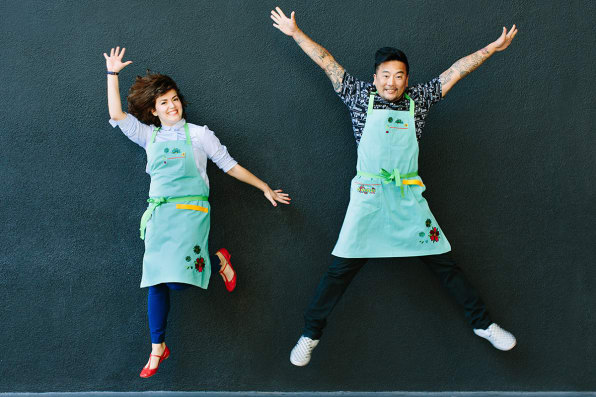
Bennett’s first and most loyal consumers have been food entrepreneurs in their twenties and thirties who really understood the value of a high-quality apron both to the employee as well as the brand. Her tagline, “Proper Bad Ass Aprons,” is tailor-made for that crowd, and has worked like marketing gold.
But over the years, Hedley & Bennett has created aprons for larger corporate entities ranging from Delta Airlines to the Four Seasons Hotels and Resorts to the Ritz-Carlton. Companies like Google, Coca-Cola, American Express, the New York Times, Lexus, Aspen Food and Wine, and SpaceX have created aprons for special culinary events. Hedley & Bennett launched an exclusive apron designed in collaboration with Bon Appetit‘s creative director that comes with annual subscriptions. (It has navy and red double stitching, an angled chest pocket for sharpies and tools, and uses Cone Mill denim.)
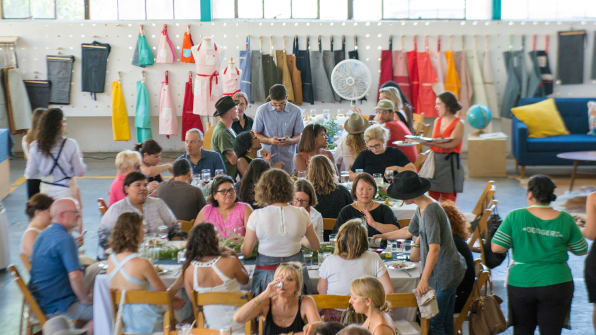
Hedley & Bennett has now sold several hundred thousand aprons through her website and other high-end retailers like Steven Alan and Heath Ceramics. (Sur la Table and Whole Foods will begin to stock them this year.) Outside the food industry, artists, florists, nail technicians, tattoo artists, sculptors, and potters have gravitated toward these aprons as well. While Hedley & Bennett is privately owned and does not disclose revenue figures, Bennett has said the company generates tens of millions of dollars in revenue annually.
But Bennett isn’t resting on her laurels. She’s still working to create the best, most beautiful aprons. Last week, for instance, the same night that the Met Gala was taking place, Bennett was tasked with outfitting the actor Jesse Tyler Ferguson to host the James Beard Awards. As he walked up the red carpet, he wore a red Hedley & Bennett apron, decorated with a garland of red tulle.
Bennett just invented the couture apron.

Ellen Bennett [Photo: Bonnie Tsang, courtesy of Hedley & Bennett]
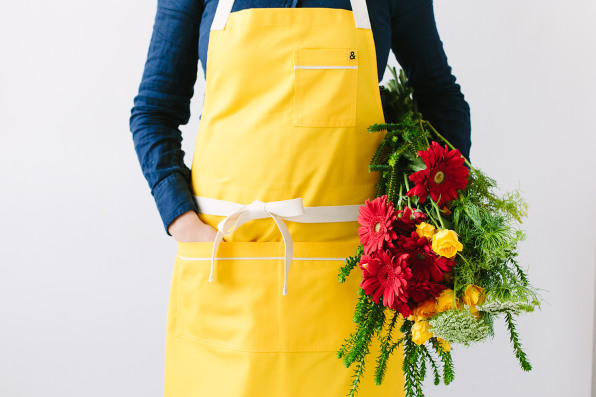
[Photo: Mary Costa, courtesy of Hedley & Bennett]
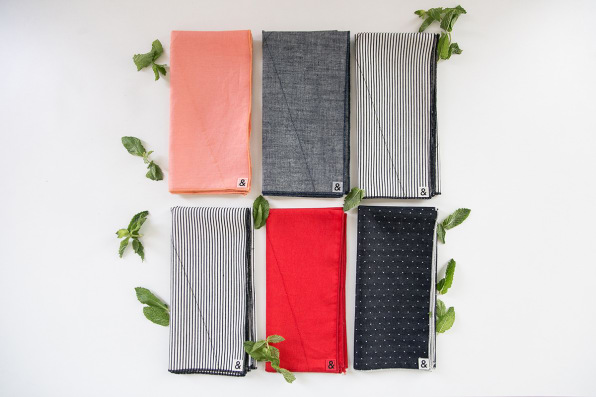
[Photo: courtesy of Hedley & Bennett]
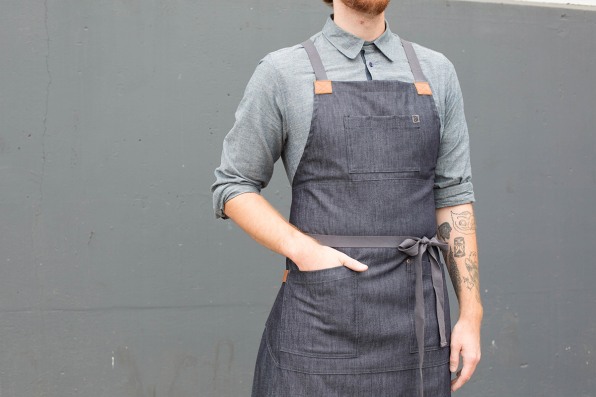
[Photo: courtesy of Hedley & Bennett]
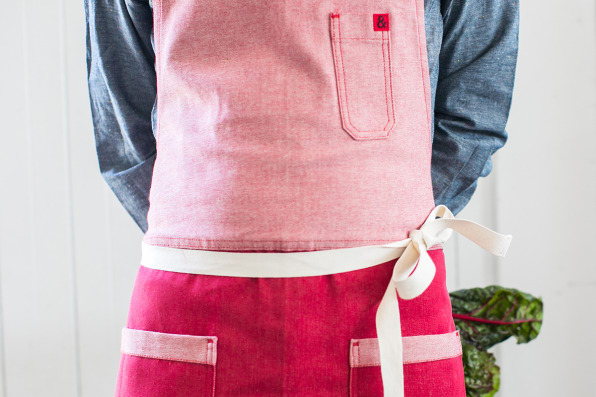
[Photo: courtesy of Hedley & Bennett]
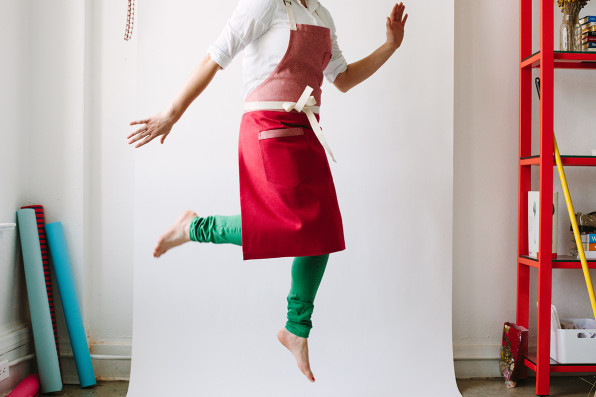
[Photo: courtesy of Hedley & Bennett]
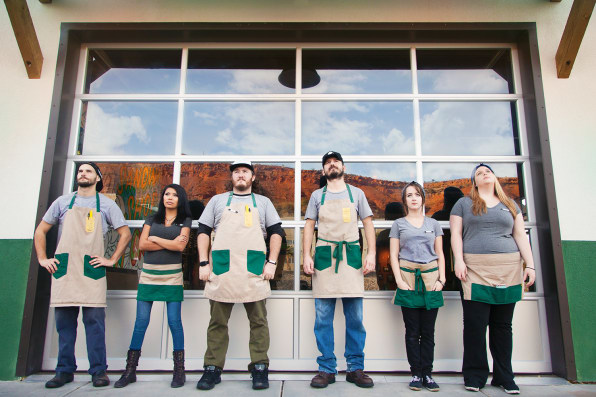
[Photo: courtesy of Hedley & Bennett]
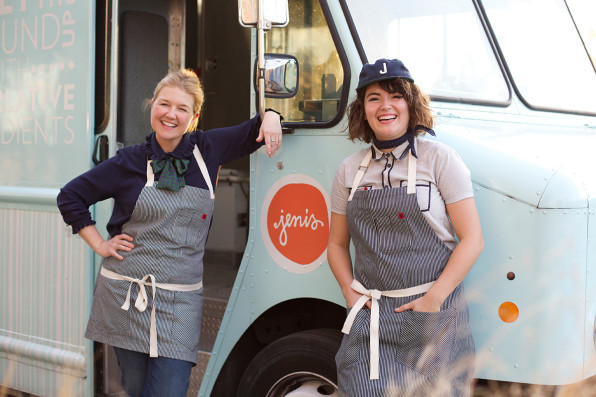
[Photo: courtesy of Hedley & Bennett]
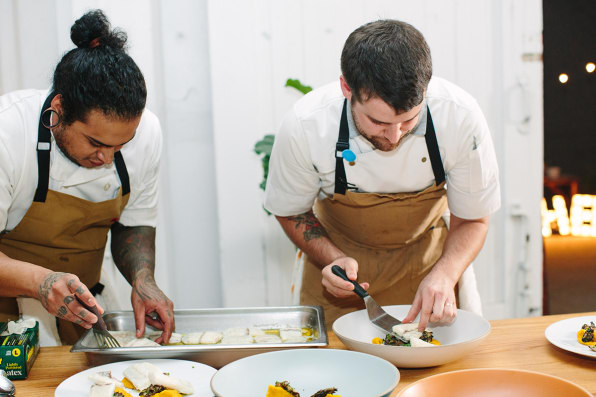
[Photo: courtesy of Hedley & Bennett]
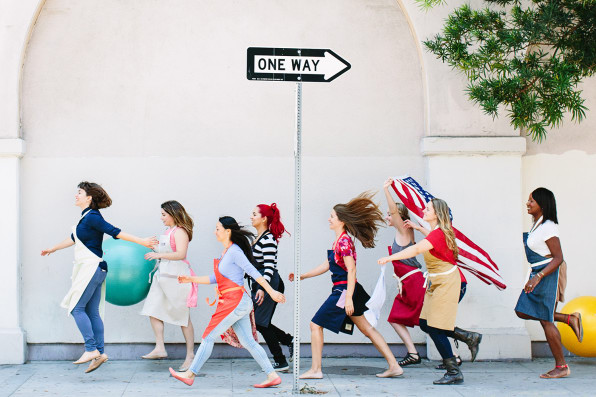
[Photo: courtesy of Hedley & Bennett]

[Photo: courtesy of Hedley & Bennett]
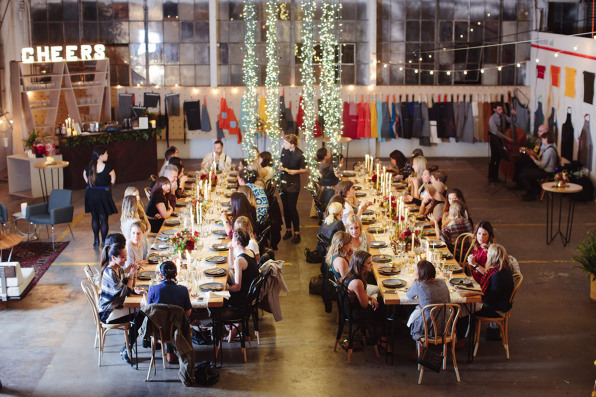
[Photo: courtesy of Hedley & Bennett]
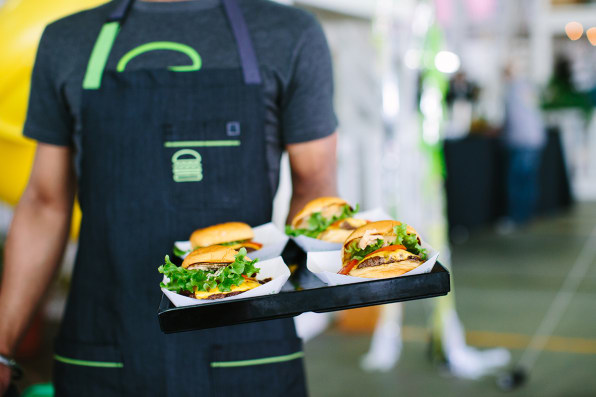
[Photo: courtesy of Hedley & Bennett]
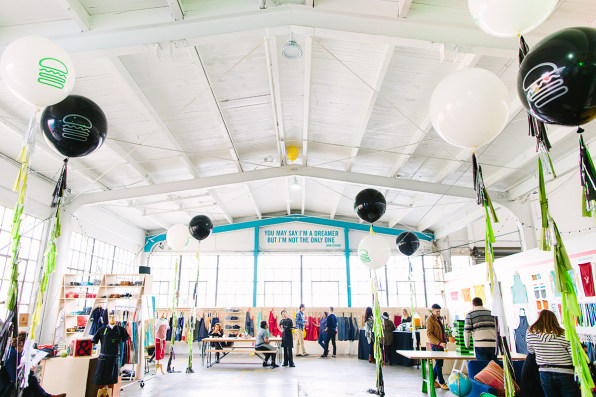
[Photo: courtesy of Hedley & Bennett]
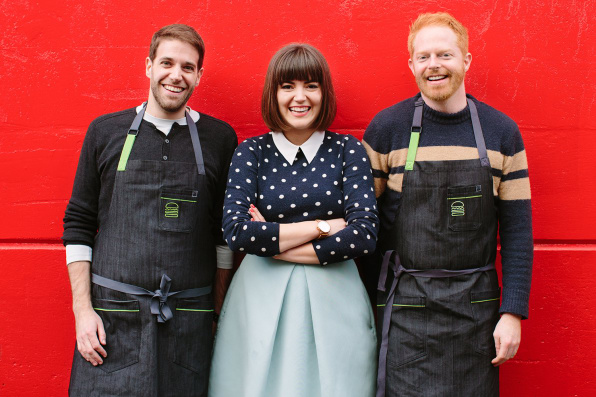
[Photo: courtesy of Hedley & Bennett]
(94)



